Amalfi and Ravello

Persevere
Pat and Bruce
Mon 3 May 2010 16:42
|
Over these two days we were able to tour the town
of Amalfi and take a side trip to Ravello. Amalfi was a very important
city-state being and independednt republic during the Byzantine times. It
was a large trading port with most of the Med and further out to the
Orient Its population grew to 70,000 people. In the middle of
the town is the Cathedral of Amalfi. The original Basilica was started in
596 AD and was greatly expanded in 1100. The new Basilica was restored in
1994 and is spetacular. However, the treasures gather are quite
remarkable. Saint Andrew, Jesus's first disciple, was crucified in
Patras. Cardinal Pietro Capuano, Papal Envoy to the Fourth Crusade,
went and got his bodily remains and moved them to Constantinople
first and then to Amalfi on 8 May 1208. His head bones and a few others
are buried under the altar.
On display in the museum are several objects.
The Angevin Mitre and the 13th century Chalice. The Mitre was produced in
1297 for Ludovico, son of King Charles II and Bishop of Toulouse. It is
decorated with 20,000 pearls, gold leaf, gemstones and fleur-de-lis.
Obvioulsy Amalfi was very important and powerful. The Normans ended that
in 1131. That was followed by an earthquake in 1343 which took care of the
rest.
One of the other benefits to Europe was Amalfi's
paper production. Claimed to have been the first paper producer in Europe
that grew to about 15 mills. Originally paper was produced from old cotton
rags, mechanically shredded very fine and mixed with water and jellyfish to
create a gluey mixture. It was layed out on fine mesh screens which was
transferred to a wool cloth to remove most of the water. Then it was hug
like laundry to dry. Watermarks from each mill distinguished the
origin. Later cotton was used directly then wood pulp. Water power
was used to drive the shredders and presses to speed up the drying
process. The last commercial operation stopped in 1969 helped by a massive
flood in the area. One mill still operates as a novelty and tourist
attration. They still can produce cotton based paper that is used for
wedding invitations and other similar special events.
We also took a side trip to Ravello, a town a
little inland but much higher up the hills. From here the views of the
coast are fantastic. Ravello was historically under the control of Amalfi
so they benefitted from that as well as the higher location with natural cliffs
made it easier to defend. It grew to about 35,000 people and had 135
churches. One of its main attrations is Villa Cimbrone. Originally
build in Roman times it was an estate of luxuriant vegetation and timber for
naval use. Owned by the Acconciajoco family in the 11th centrury then by
the Fusco family. At the end of the 19th century it was badly abondoned
but was bought in 1904 by Ernest William Becket, Lord Grimthorpe. He led
its restoration.
The Amalfi coast is worth a visit. Amalfi is
worth a day or two and Ravello or Positano another day. Can't say what it
would be like during the summer but springtime was fine, a little rainy but
nothing to worry about. Not as pricey as Capri but not cheap.
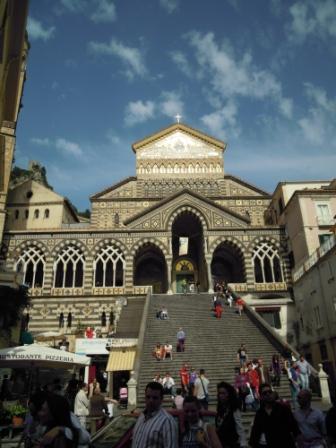 Amalfi Cathedral, steps leading up from the town
square
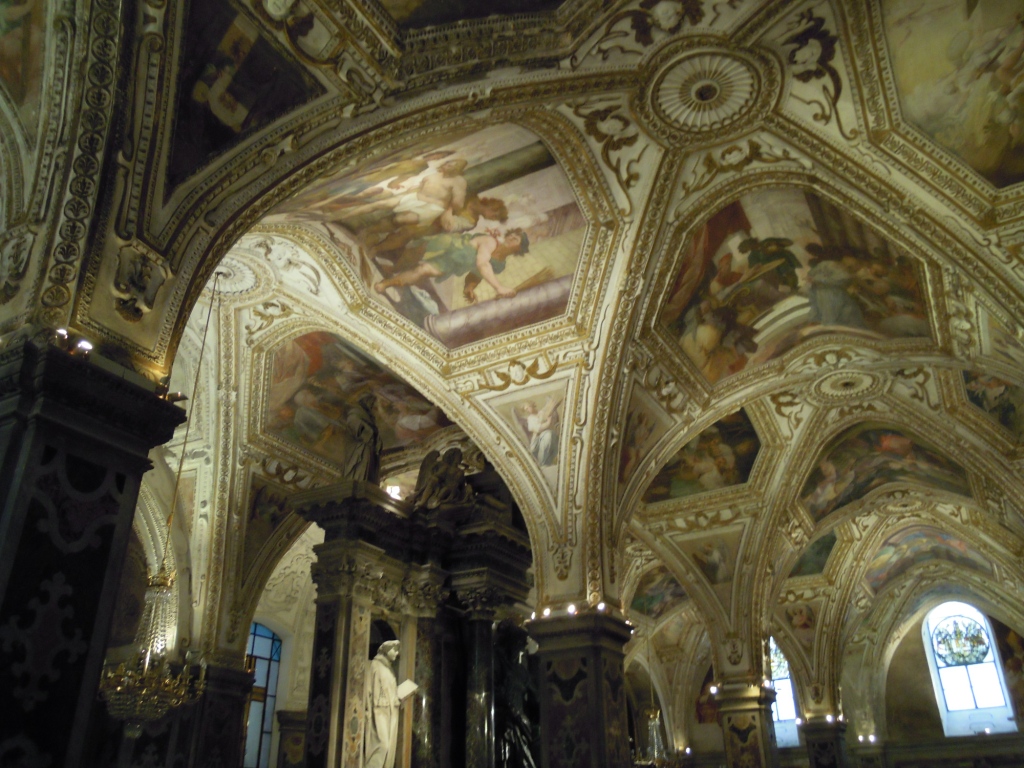 Ceiling of the crypt dedicated to St
Andrew
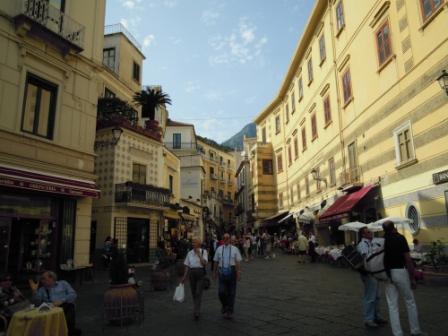 Main street in Amalfi
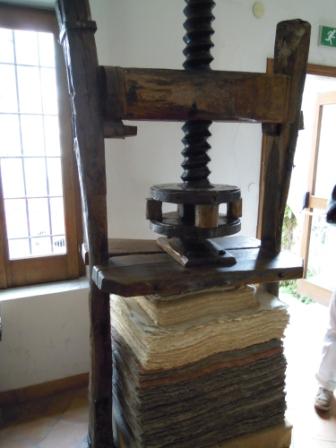 Paper press at the last mill
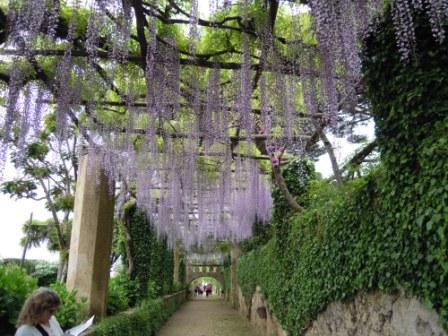 Avenue of Immensity at Villa Cimbrone. Pat
reading the map.
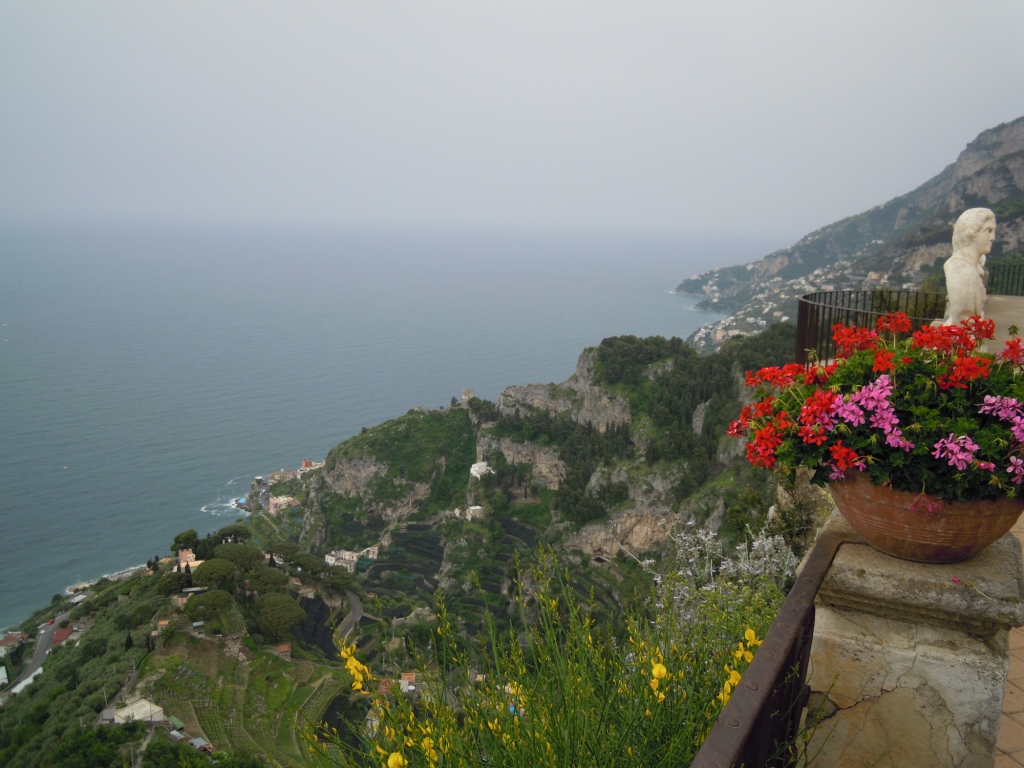 View from the Terrace of Infinity at Villa
Cimbrone
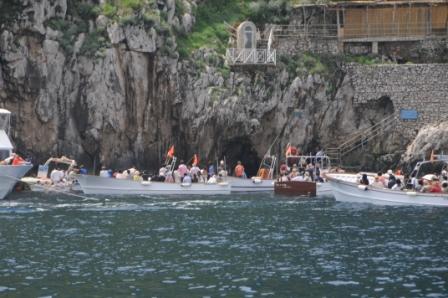 I forgot this the other day. This is the Blue
Grotto tourist traffic at Capri during the off
season!
|